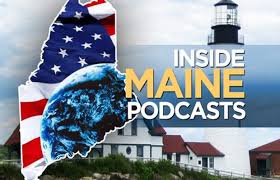|
|
|
Notes from Innovation Policyworks
I hate open offices. The few times I've had to work in one, it drove me crazy. I like to have my own space, a lot of quiet and no visual distractions. A recent
Harvard Business Review article explains that researchers are concluding that open offices in fact do not increase productivity or creativity because workers decide whom they want to collaborate with and where, regardless of physical space. The interesting question, then, is what about co-working spaces, many of whom emulate an open, modern aesthetic, and are designed to enhance collaboration. Perhaps these design choices are also not helping as much as architecture that preserves privacy, concentration, and quiet. Just sayin'.
Cathy
|
Photo credit: Wall Street Journal
Several of the Democratic candidates for President, among other pundits, are calling for significant changes and restrictions on "Big Tech," notably Google, Amazon, and Facebook. Others call this "TechLash."
While economist Robert Atkinson argues that the policies being promoted will severely restrict innovation and economic growth, he also understands that "technology is a fundamental force for human progress that also can pose real challenges, which deserve smart, thoroughly considered, and effective responses." Atkinson's paper points out that concerns about privacy and cybersecurity, for instance, are real issues. Yet, he is concerned that technology bans, taxes and overly stringent regulations will yield unintended consequences like reduced innovation. Read the paper HERE.
|
What's Wrong About Lean Startup
The Lean Startup Method, pioneered by Steve Blank and Eric Ries, supports a "bias towards action." Founders test their hypotheses about their business models using "fast and cheap Minimal Viable Products." They continue this process until they find a combination of product and market that works. A new paper by Wharton entrepreneurship professor Ethan Mollick suggests that this method has its drawbacks.
The primary one is that often the customer doesn't know what they want. This method will yield good product improvements, but rarely disruptive innovations. Secondly, Mollick suggests that the Business Model Canvas is useful, but doesn't focus on the key insight that is the "secret sauce" for each business - it doesn't help an entrepreneur articulate "Why my company is unique." Mollick thinks that founders should start with a strategy - "a theory about why your company is going to win," and return the power to the founders. Read more
HERE. Another critique is offered by Felin, Gambardella, Stern and Zenger,
HERE.
|
Most Business Incentives Don't Work....
At least 75% of the time, typical incentives do not affect a business's decision on where to locate and create jobs.
This is the finding of a new book by Tim Bartik. His argument is that incentives must be "tamed." By this, Bartik means that they should (1) target businesses that make a difference in your economy (i.e., are traded, locally owned, and have a large multiplier effect); (2) target economically distressed areas or clusters; (3) be correctly structured; and (4) be evaluated on an ongoing basis. Learn more
HERE.
|
Your Employees Really Can be Creative
Senior executives often believe that their employees aren't creative and engaging them in innovation will be chaotic. A Harvard Business Review article describes one company's experience that proved this canard inaccurate.
Creativity came from the most unexpected places in the organization when an opportunity to invest in new ideas was announced. The takeaways were that fresh perspectives can drive innovation and a good process can help clarify goals while leaving the "how" open. Last, the company learned that finding and fulfilling a purpose is a fundamental human need and motivated participation more than money. Read the whole story
HERE.
|
Government Should be Run Like a Business - NOT!
Critics of government often complain that it should be run more like a business. But, this misses the important point that many government services exist to serve the public interest, not just a pure profit motive.
On the flip side, it is now common to question if some businesses should be run like a government, especially public utilities. Exhibit A is Pacific Gas & Electric, whose aging infrastructure has been sacrificed for increased shareholder dividends, and is responsible for billions in damages from wildfires. PG&E is clearly not operating in the public interest, but perhaps it should. Here in Maine, similar questions are arising around Central Maine Power (CMP). Some have called for the conversion of the company to a public utility, especially given the drive to convert to cleaner electricity, and even lower energy consumption to impact climate change. Neither of these goals, while in the public interest, are necessarily in the company's interests, at least in the short term. Learn more
HERE and
HERE.
|
Jobs Created by New and Young Firms
Entrepreneurship advocates argue that small businesses are the engine of job creation. A more nuanced view comes from a recent SSTI analysis of Census Bureau's Business Employment Dynamics.
Between 2014-18, firms aged one year or less accounted for 98 percent of new jobs overall, although this was not true in the South and much of the West (except California). On the other hand, firms aged one to four years typically have the lowest share of job creation, just under 6 percent. This seems to be a result of the companies that close before their fifth anniversary. Firms aged five to nine actually show job losses in some states. Finally, firms aged 10 years or more generally accounted for both the greatest amount of job losses and the second greatest amount of job gains! See the charts
HERE.
|
US Funding for R&D Slides
The US continues to fall further behind world leaders in funding for university research according to analysis by the Information Technology and Innovation Foundation (ITIF).
According to the most recent OECD data, the US is now 28th of 39 nations in government funding for university research as a share of GDP. And, 16 of the 39 nations have public and private sectors that also invest more in R&D. (In the US, business-funded R&D is growing more and more concentrated in a few states - California, Massachusetts, Michigan, Washington and Texas.) Research drives innovation and innovation drives long-run economic growth. University research is important because it "typically expands the pool from which the private sector draws ideas and innovation." The US would need to invest an additional $108 billion to match the first-place country, Switzerland. Read MORE.
|
How Big is the Green Economy?
One aspect of climate change and adaptation that is often overlooked is its ability to generate very significant levels of investment and employment. So, measuring the so-called "green economy" has become a cottage industry.
It's very difficult, because companies may be partly in the green economy and job titles may cover folks who are involved as well as folks who aren't. For instance, a utility may generate some electricity using renewable energy sources (green), but also use coal, oil or natural gas (not green). A HVAC installer may work on conventional heating systems (not green) or heat pumps (green). A new paper published in
Nature tries to develop a better method for measuring the US green economy. It concludes that the US green economy is $1.3 trillion in annual sales and employs nearly 9.5 million full-time equivalent workers, and both measures have grown over 20% in the last three years. Read the gory details
HERE.
|
|
|
Hear Cathy on WGAN's Inside Maine with Marty Grohman
 I had the most fun talking with Marty Grohman, serial entrepreneur, legislator, House candidate and now Executive Director of E2Tech. He's just as engaging in person as he is on the radio! Listen HERE. I had the most fun talking with Marty Grohman, serial entrepreneur, legislator, House candidate and now Executive Director of E2Tech. He's just as engaging in person as he is on the radio! Listen HERE.
|
|
|
"
Big ideas come from the unconscious... Stuff your conscious mind with information, then unhook your rational thought process."
|
|
Innovation of the Month: NASA

A few weeks ago, two
NASA
astronauts conducted the first all-female spacewalk to repair equipment on the International Space Station.
Christina Koch and Mainer Dr. Jessica Meir each donned a size medium spacesuit for the mission, which weren't available for a previously scheduled all-female spacewalk in March 2019. It was Dr. Meir's first time, making her the 15th woman to spacewalk.
Over 200 men have performed spacewalks, compared to only 15 women. Is it because women are less qualified? Nope! It's because of the spacesuits.
They were not made with women in mind, and their design hasn't changed much since the 1970s. In particular, it's been about an absence of spacesuits in diverse sizes:
this spacewalk only became possible when a suit was altered to become medium-sized.
Question for You:
Does legacy thinking, design and more mean
your
offering excludes certain groups of people outright?
|
|
New to Innovation, Entrepreneurship or Economic Development?
Want to learn more about what programs work and why?
Five Strategies for Economic Development that enhance innovation and entrepreneurship.
Click
HERE for a complimentary PDF that outlines the whys and wherefores!
|
|
Creating, Building and Supporting Entrepreneurial Ecosystems: What You Can Do
Now available on Amazon Kindle!
Every community, region or state is unique. It has its own demographics, geography, history, culture, business and industry mix, assets and politics. To figure out how to create, building or grow an entrepreneurial ecosystem requires an understanding of both the framework of innovation and entrepreneurship-based economic development, and a replicable, reliable process for linking that framework to your situation.
This short book is both a quick introduction to the framework, and an overview of the process, with examples from around the US to give you inspiration.
I hope you enjoy it! If you do, please write a review! Get it HERE.
|
Metrics for Entrepreneurship Programs
 Have you been wondering how to convince your stakeholders that your program is performing well? My book on evaluating entrepreneurial programs, written for the International Business Innovation Association (iNBIA), is available on its website. The basics apply to any economic development program. Check it out HERE. Have you been wondering how to convince your stakeholders that your program is performing well? My book on evaluating entrepreneurial programs, written for the International Business Innovation Association (iNBIA), is available on its website. The basics apply to any economic development program. Check it out HERE.
|
|
|